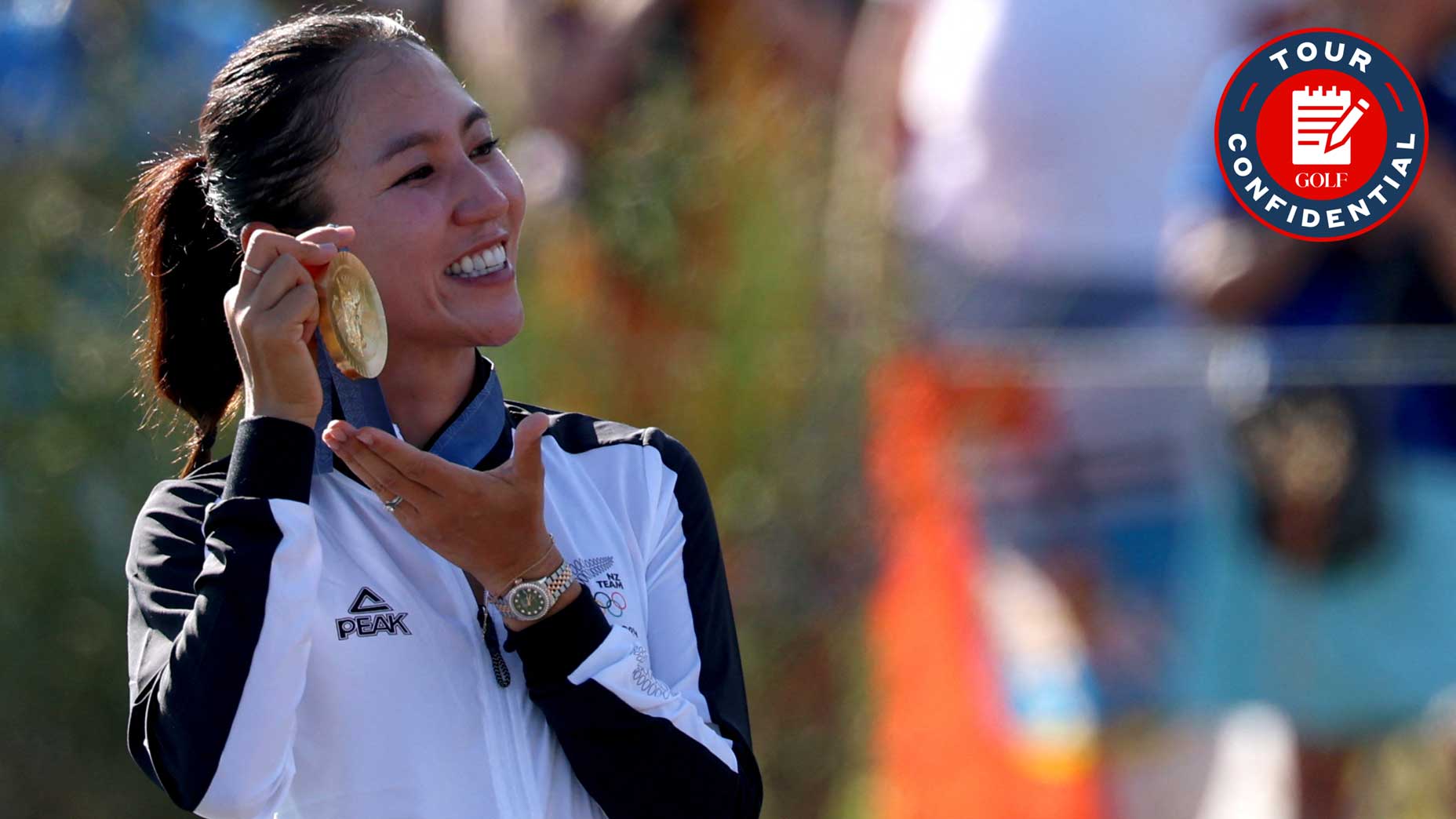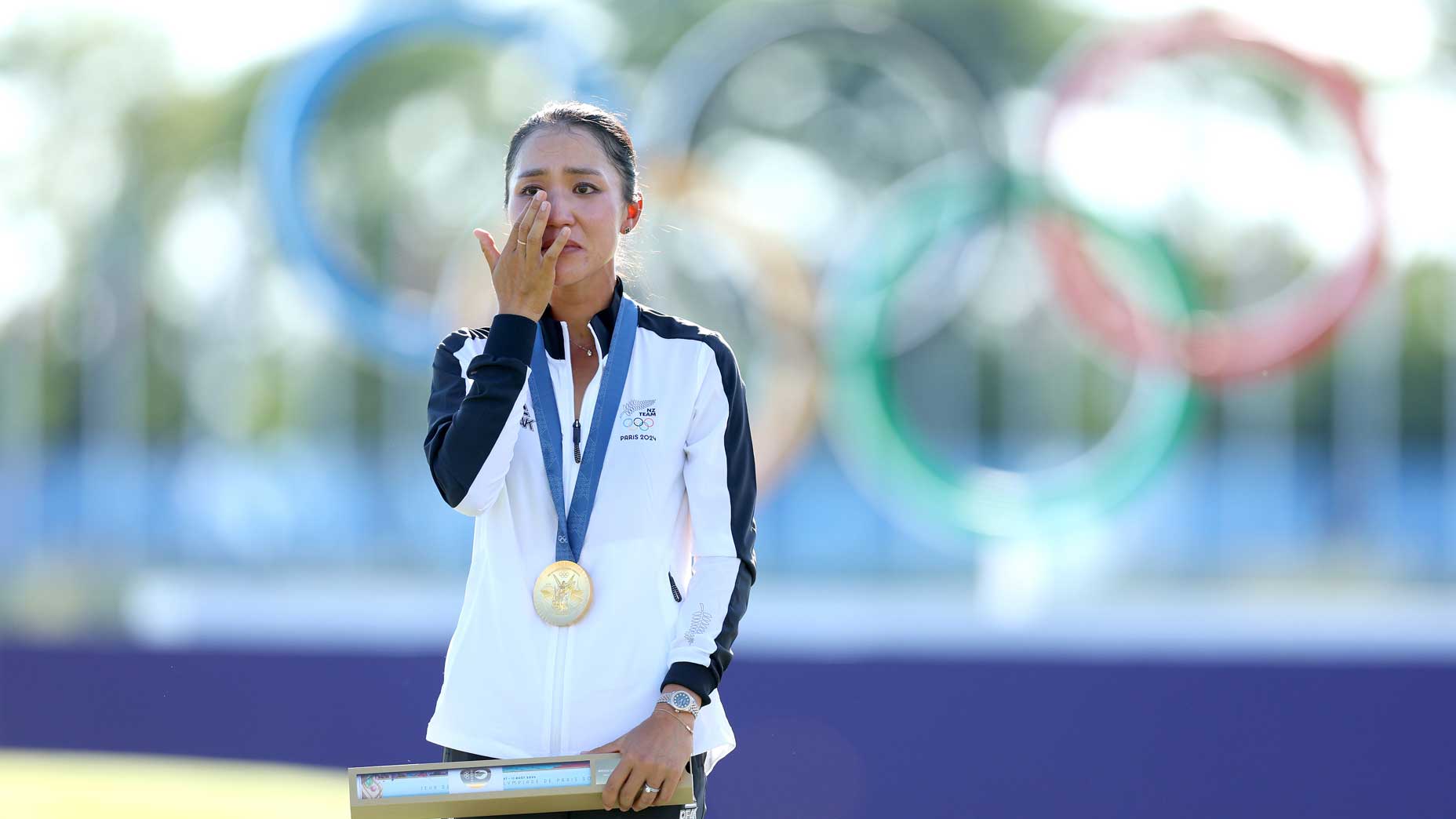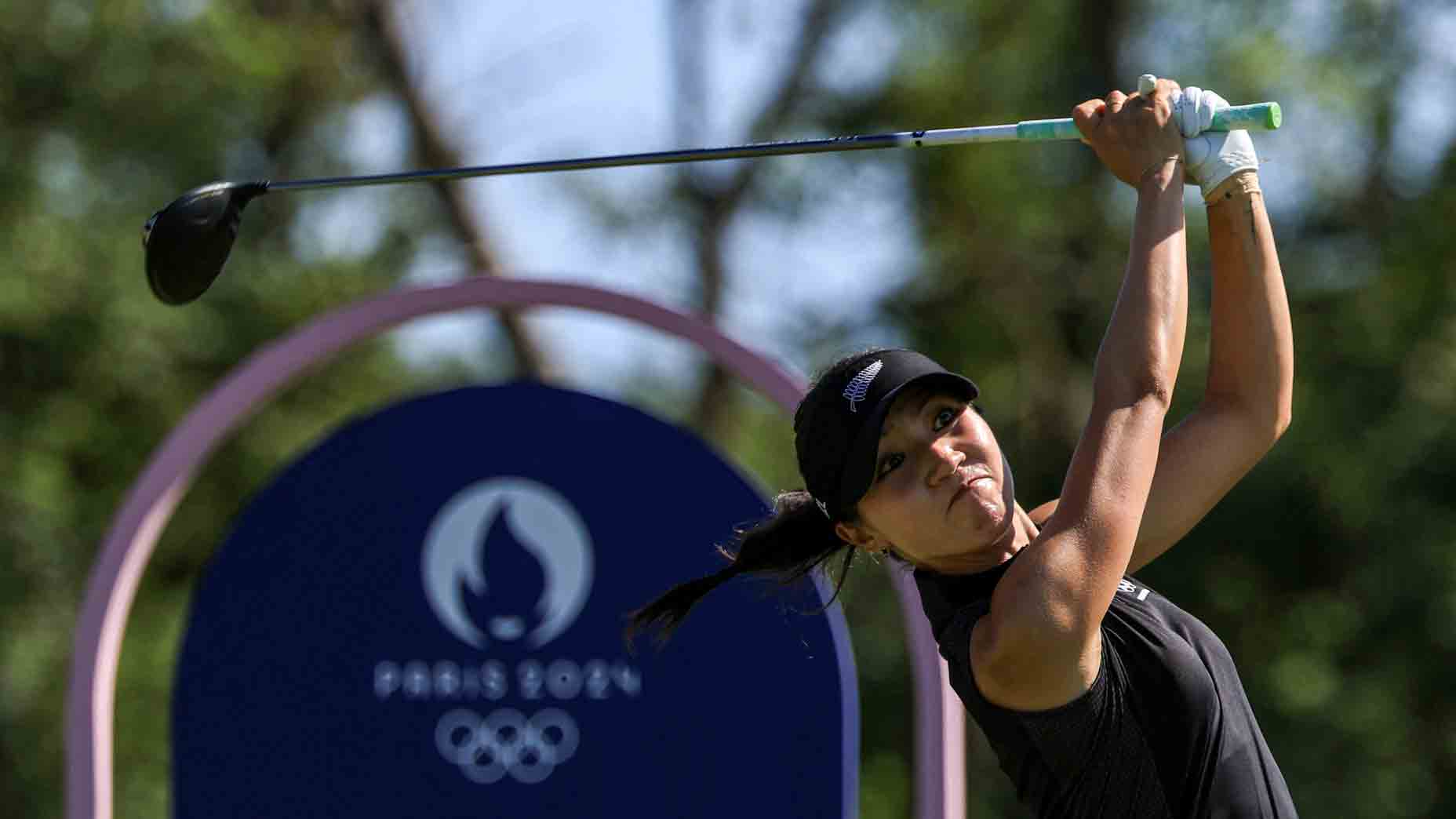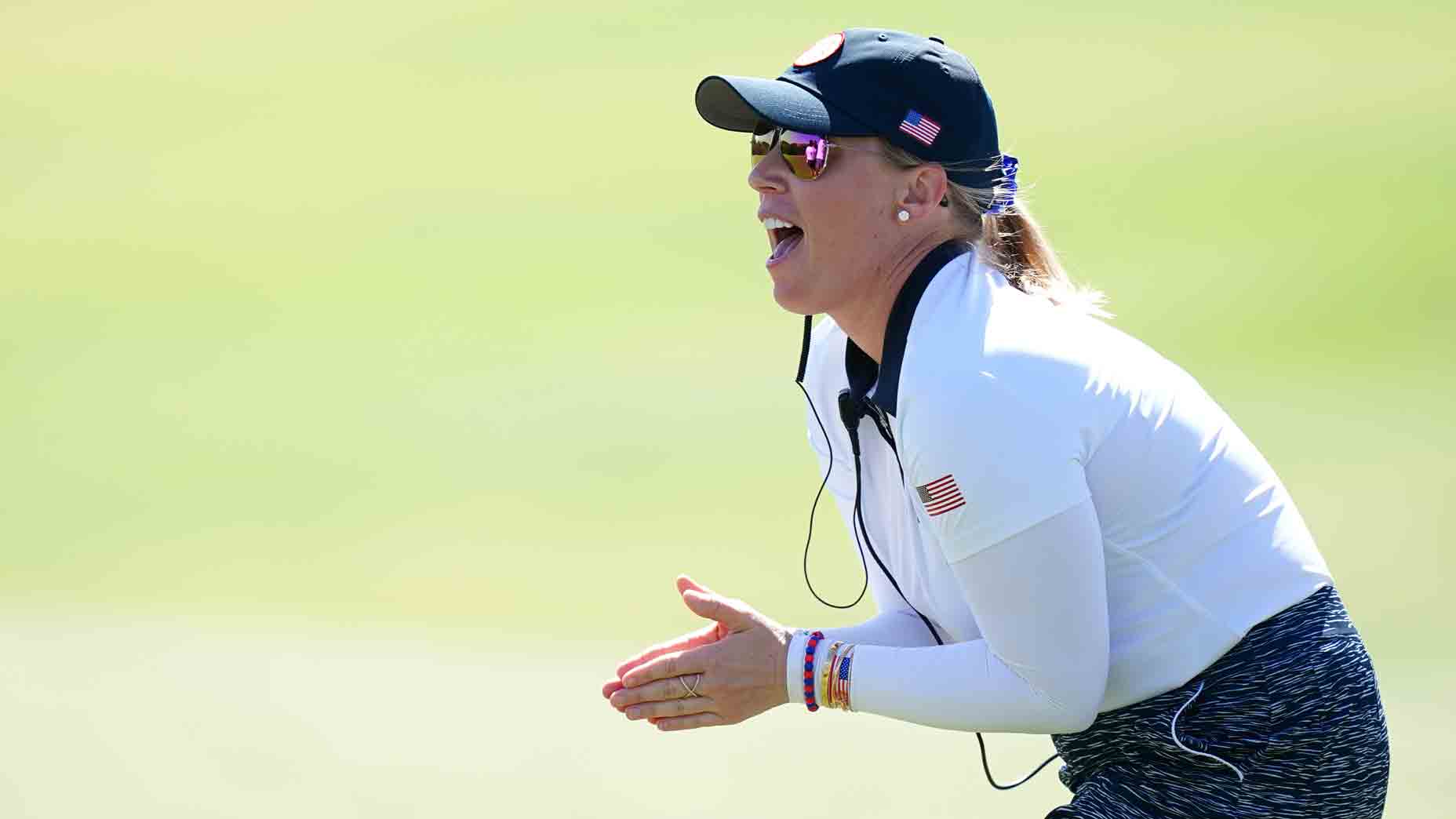19-hour commute. No practice round. But this Olympics star is back
- Share on Facebook
- Share on Twitter
- Share by Email

Aditi Ashok plays a tee shot during the first round of the women's Olympic competition Wednesday.
Getty Images
SAINT-QUENTIN-EN-YVELINES, France — After playing for five hours, shooting 72, racing to the airport, flying nine hours, crossing customs, claiming her luggage, rechecking her luggage, flying another 90 minutes and getting her luggage once more, the real kick in the shin came for Aditi Ashok.
The Olympics accreditation station at Charles de Gaulle was closed for the evening.
“So then I had to go back to the [Olympic] Village, which is an extra hour,” Ashok said. By the time her head hit the pillow it was nearly midnight, a full day and change after she’d finished T22 at the Portland Classic. Ashok recounted the travel day from Le Golf National in France, nine time zones away, after carding another 72 in the first round of the Olympic golf competition. This one had to feel better than her final round in Portland.
Ashok was the only player in the field to make this commute, and was promptly rewarded by the IGF with a 9:22 a.m. tee time, the third group out. Due to her late arrival, and the Olympics schedule pushing up the tournament to Wednesday, Ashok’s only prep work came on Tuesday, and all of that came on the driving range.
This Olympic golfer and her father made a wild bet. Against all odds, she won itBy: Sean Zak
It helps that Aditi played the course a couple times last month, ahead of the nearby Evian Championship, but you could tell her caddie — her father, Ashok Gudlamani — didn’t have any time to do the typical looper homework; he often wasn’t sure where to place her bag around the greens, unaware of the direction to the next tee box.
No bother, though. When you hit nearly every fairway and nearly every green, your caddie doesn’t really need to know the golf course. Good golf means simple golf.
Olympics golf fans will remember Ashok from three years ago, when she was the darling of the Tokyo Games.
“People bring it up a lot,” she says.
She played so well the Prime Minister of India was tweeting about her, spiking golf interest in a sports-mad country, if only for just a weekend. Ashok was 23 then, one of the shortest hitters in the field, but making every putt she looked at. She’s 26 now, still one of the shortest hitters in the field, and still mostly making every putt she looks at. But do you remember the 18-year-old Aditi, the youngest golfer in Olympics history, teeing it up in Rio? Her career has been defined by this event more than any other golfer, and she hasn’t even won a medal.
Ashok finished fourth in 2021, just one stroke out of a playoff for silver. We were enamored by her smooth swing, her untucked shirts, and that her mother was on the bag, after dad caddied in Rio. We were all-in on that magical putting stroke and the black glove she wore at all times, even on the greens.
None of that has changed. The shirts are still untucked. The glove is still black and almost always covers her left hand. She yanked it off after the round to reveal one of the best golfer’s tans going. The only obvious difference about Ashok is she’s sneaking up on veteran status now. 2024 is her eighth year as a pro. She’s bagged a couple wins on the Ladies European Tour, and now consistently oscillates between 40th and 63rd in the world. But she played 24 events last year and this is her 19th this year, traveling from Saudi Arabia to Thailand to New Jersey and even mixing in a few stops in California. For someone who still lives in India, that’s a lot — but welcome to pro golf. Given her experience, going back nine time zones doesn’t completely wreck her like it does the rest of us. It’s why she’s headed to southwest Scotland next week for the Ladies Scottish Open. And then to the east of Scotland after that, for the Women’s British Open, her seventh tournament in a row.
Ashok doesn’t just fly like a pro, she talks like one, too. Why did she play in Portland? She liked the golf course. It reminds her of what she grew up on. Tree-lined and not much water. What happened on 18 Thursday, where she made double-bogey 7? “I hit a bad drive. I hit a bad second shot. I hit a bad third shot. So not much good happened there.”
Not much good, but the only bad of her day. Ashok figured that flying blind onto the 1st tee actually helped her stay defensive on a difficult day. She got comfortable chasing par and ended up making 13 of ‘em. The double on 18 brought her back to even, where she sits at T13, ready for a night of normal sleep. Early Wednesday morning, it was clear her body wasn’t quite on Central European Time yet, as she counted sheep between 1 and 4 a.m.
“I haven’t figured it out yet,” she said, “but hopefully it gets better as the week goes on. Not at a hundred percent but close enough.”
Latest In News

Sean Zak
Golf.com Editor
Sean Zak is a writer at GOLF Magazine and just published his first book, which follows his travels in Scotland during the most pivotal summer in the game’s history.










